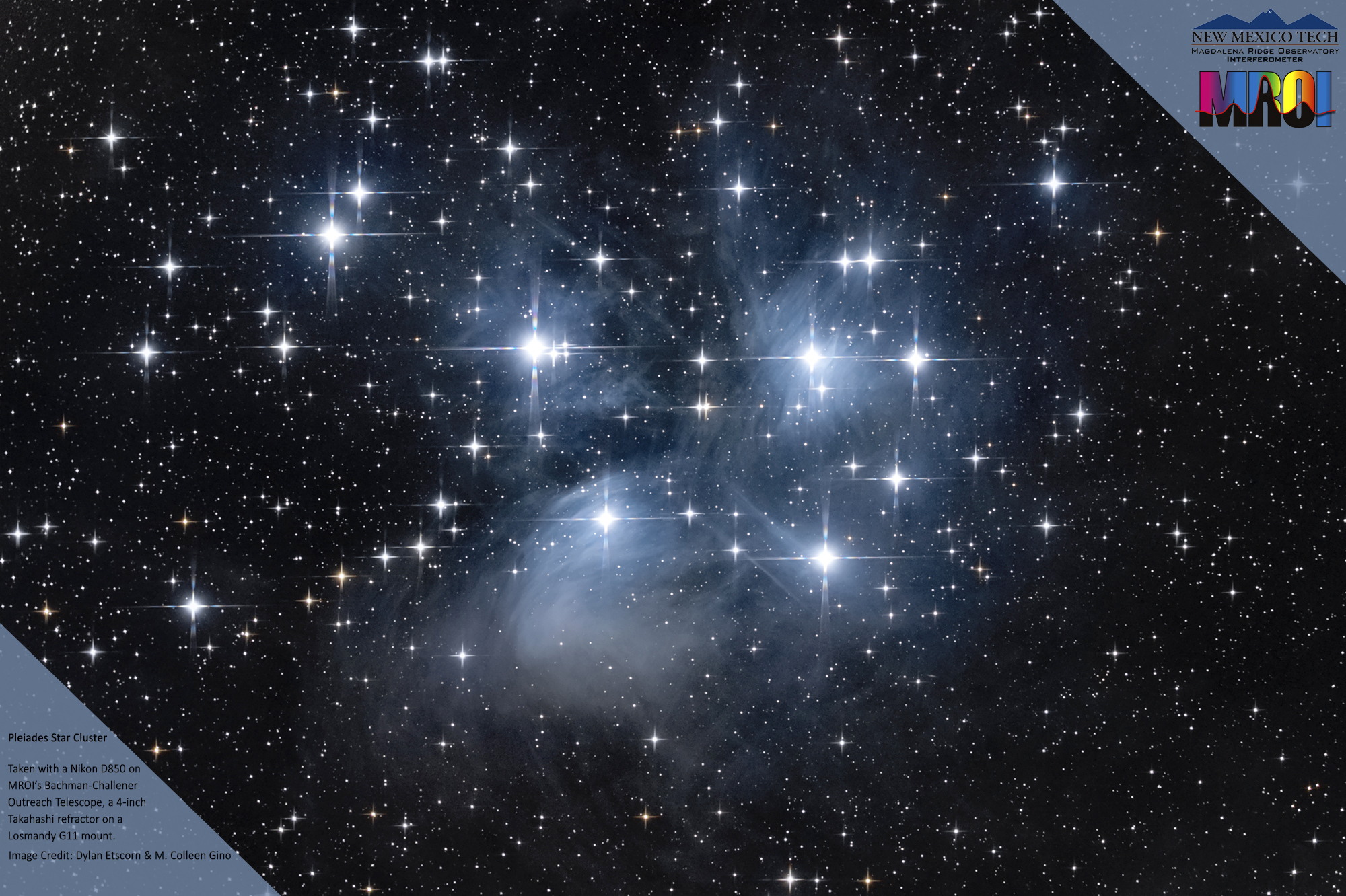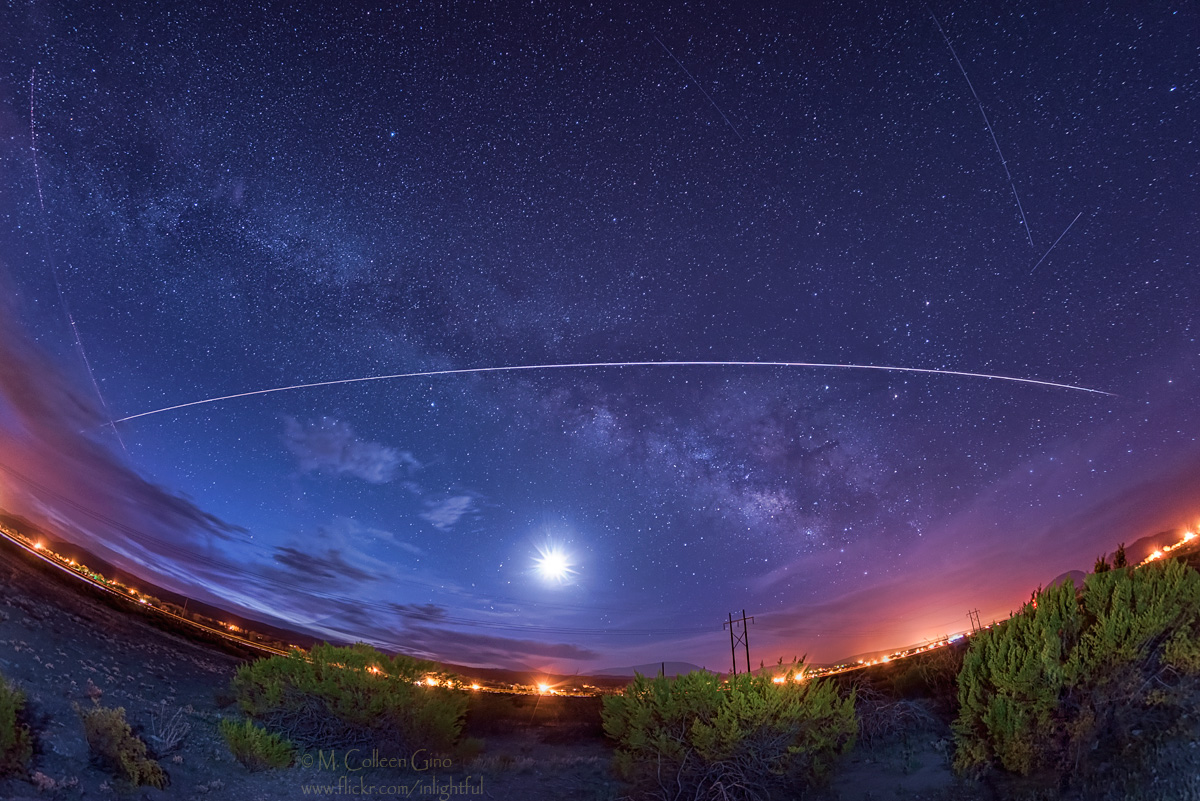If you go outside tonight and look up into the sky, you can see the International Space Station (ISS) passing nearly overhead around 9:35 PM. At that time it will be at the highest point in its pass, and will appear very bright at an apparent magnitude of -3.9. That’s more than two-and-a-half times brighter than the brightest object in the sky at this time, which is the planet Jupiter in the constellation Sagittarius, and nearly 40 times brighter than the bright star Vega in the constellation Lyra, which the ISS will pass close by at around 9:36 PM.
The complete pass will last over 10 minutes. The ISS will rise above the horizon in the southwest (azimuth 222°) at 9:30 PM, and reach an altitude of 10° by 9:32 PM, after which point it most commonly begins to be visible. The ISS will reach the highest point in its pass of 74° at 9:35 PM, then drop below 10° in the northeast (azimuth 50°) around 9:39 PM.
How much of the pass you can see is dependent upon many factors including the altitude of your local horizon, the amount of haze in the sky near the horizon, and of course, the amount and location of cloud cover. From our location at New Mexico Tech’s Magdalena Ridge Observatory near Socorro, NM, we should be able to see nearly the complete pass if weather permits.

For more information about this and other ISS visible passes, we suggest you visit the website Heavens Above at www.heavens-above.com. After entering your geographical location, you can retrieve information regarding ISS and other satellite passes, which include visibility tables and sky charts like the one at right. You can also find information on a variety of other astronomy subjects as well.
Check in with us tomorrow when we wish happy birthday to one of our favorite astronomers who co-discovered a previously unknown type of celestial object in the mid-1960s.
M. Colleen Gino, MRO Assistant Director of Outreach and Communications

